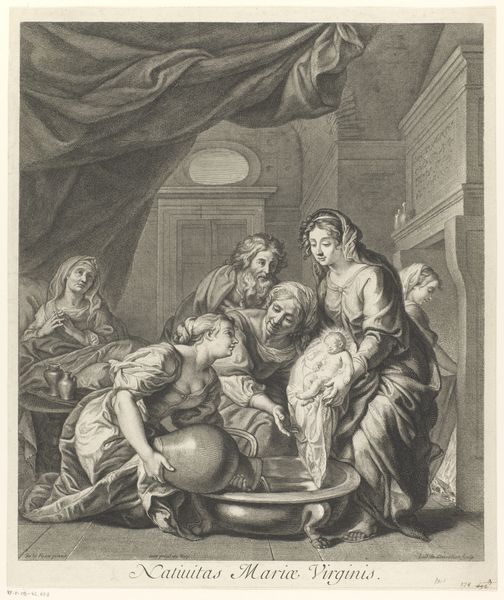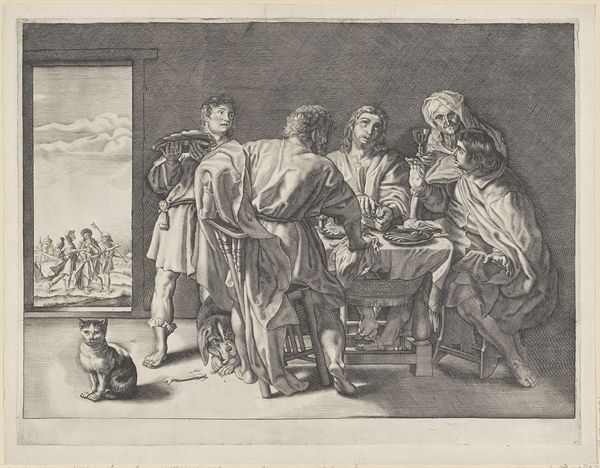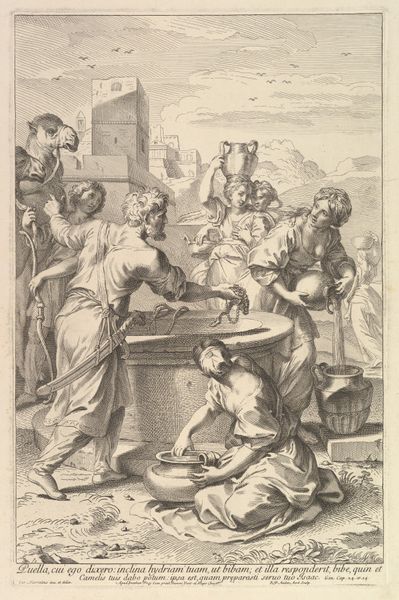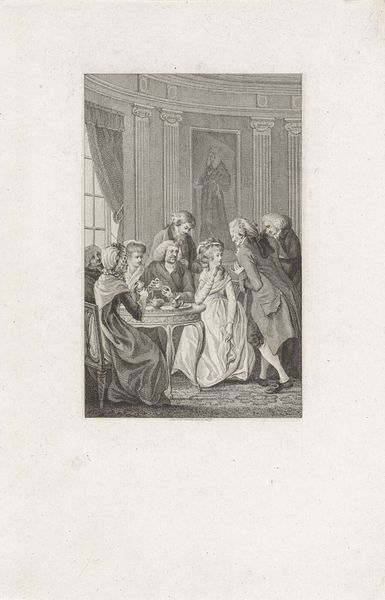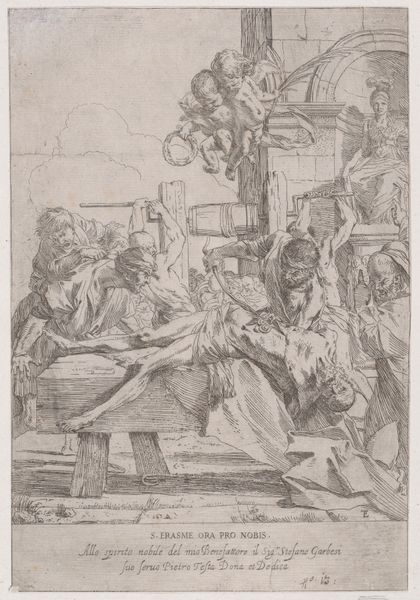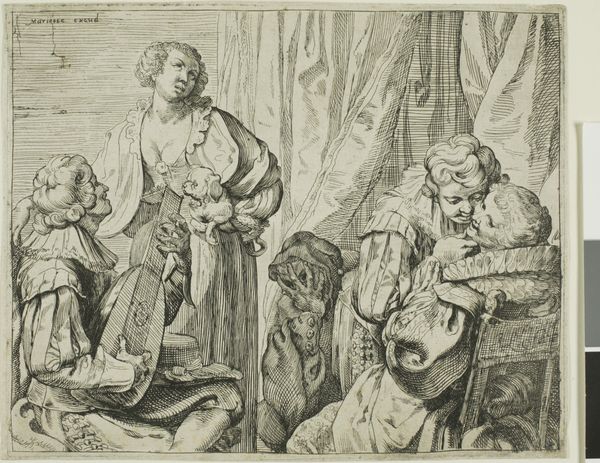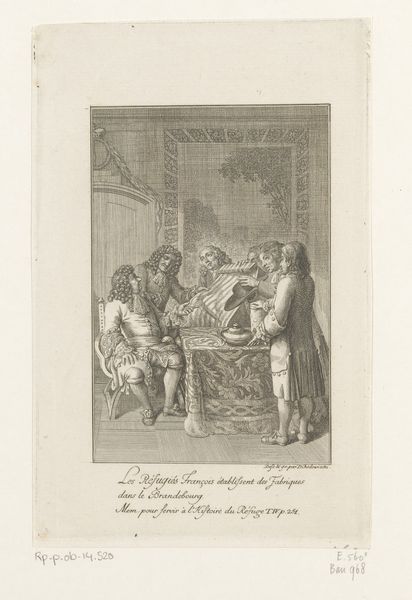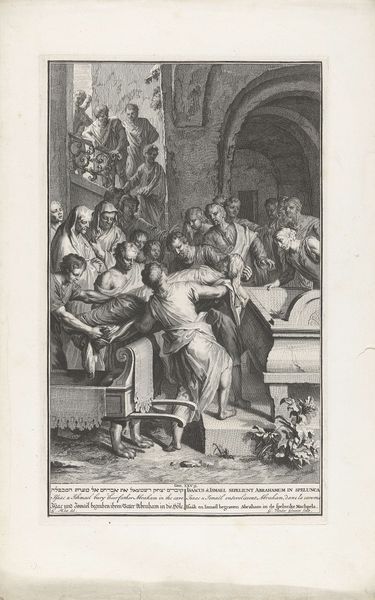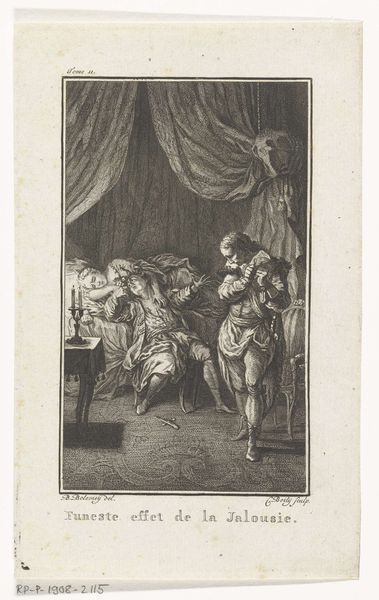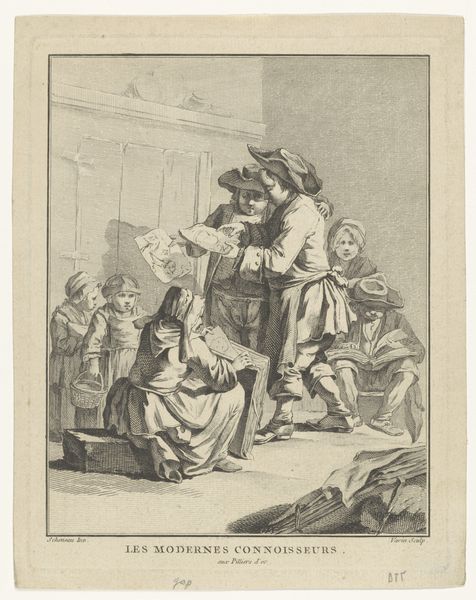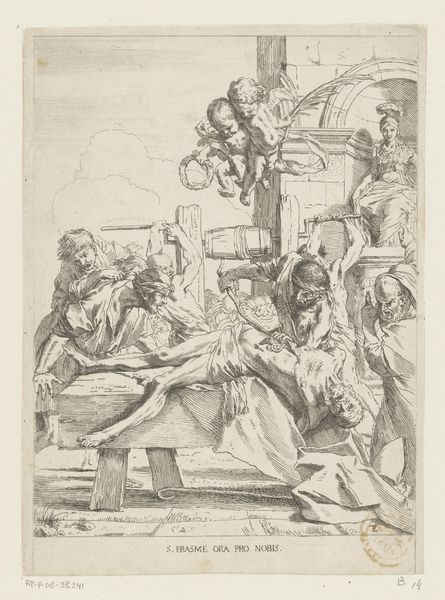
engraving
#
baroque
#
charcoal drawing
#
genre-painting
#
history-painting
#
engraving
Dimensions: height 362 mm, width 327 mm
Copyright: Rijks Museum: Open Domain
Editor: Here we have Pieter van Sompel's 1643 engraving, "Maaltijd in Emmaus," or "Meal at Emmaus," currently at the Rijksmuseum. It has a hushed, almost secretive feel. The fine lines of the engraving give it a textural complexity I wouldn’t have expected. What strikes you about this work? Curator: For me, it's the intersection of the divine and the quotidian achieved through very specific materials and processes. We're looking at an engraving, a reproductive medium that democratized imagery. Consider the economics here: engravings made religious narratives more accessible. How does the artist’s choice to use an engraving influence your understanding? Editor: It’s interesting to think of this devotional image in the context of mass production. Engraving meant wider distribution and therefore wider access, yet the craft itself would've been quite specialized and time-consuming, wouldn't it? How would that have shaped its value for people at the time? Curator: Precisely! The labour involved gives it value. An engraving necessitates the skill of a trained artisan meticulously transferring an image onto a metal plate. This craft production is in direct dialogue with the religious subject matter. Can we truly separate the content from its making in this era? Where would we even draw the line? Editor: So the accessibility afforded by the medium clashes with the intensive work of creating it… That makes me rethink my initial impression of simplicity. It is rich with different ideas. Curator: Exactly! It prompts us to see artistic creations as bound up in complex relationships involving labor, materials, and social forces, revealing how art reflects not only religious belief, but the economic conditions in which it's produced and consumed.
Comments
No comments
Be the first to comment and join the conversation on the ultimate creative platform.
